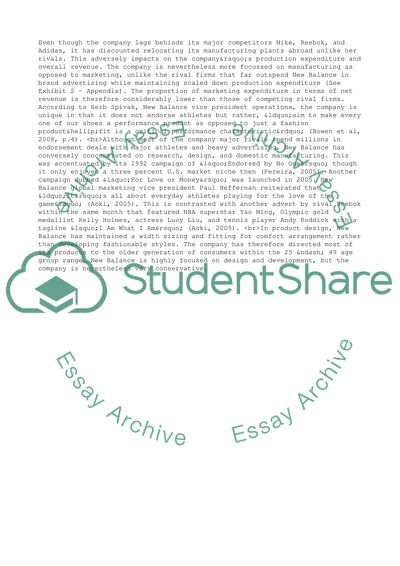Cite this document
(New Balance Athletic Shoe Inc Case Study Example | Topics and Well Written Essays - 3500 words - 2, n.d.)
New Balance Athletic Shoe Inc Case Study Example | Topics and Well Written Essays - 3500 words - 2. Retrieved from https://studentshare.org/business/1727651-company-analysis
New Balance Athletic Shoe Inc Case Study Example | Topics and Well Written Essays - 3500 words - 2. Retrieved from https://studentshare.org/business/1727651-company-analysis
(New Balance Athletic Shoe Inc Case Study Example | Topics and Well Written Essays - 3500 Words - 2)
New Balance Athletic Shoe Inc Case Study Example | Topics and Well Written Essays - 3500 Words - 2. https://studentshare.org/business/1727651-company-analysis.
New Balance Athletic Shoe Inc Case Study Example | Topics and Well Written Essays - 3500 Words - 2. https://studentshare.org/business/1727651-company-analysis.
“New Balance Athletic Shoe Inc Case Study Example | Topics and Well Written Essays - 3500 Words - 2”, n.d. https://studentshare.org/business/1727651-company-analysis.


